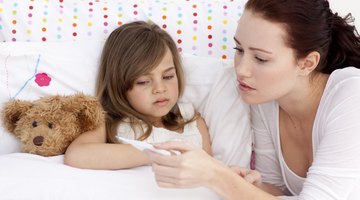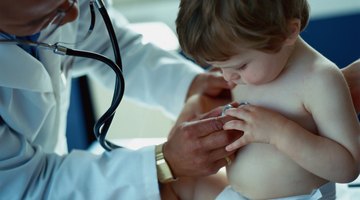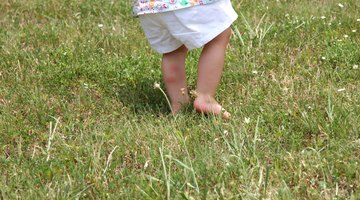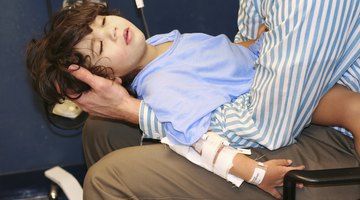The Reasons for Hair Loss in Toddlers
According to “What to Expect the Toddler Years,” it's normal to lose 40 to 100 strands of hair per day, but abnormal hair loss, or alopecia, is uncommon for toddlers. According to the American Hair Loss Association, only 3 percent of pediatric office visits are in relation to hair loss. It can be understandably frustrating when your toddler develops bald spots and noticeably thinner hair, but luckily, it is reversible in most cases.
Tinea Capititis
Tinea capititis is a scalp infection caused by a fungus, such as ringworm. According to “What to Expect the Toddler Years,” children between the ages of 2 and 10 are most susceptible to ringworm, which causes thinning of the hair and bald spots. If your toddler is experiencing dandruff-like flaking with the baldness, this is a good indicator of ringworm since toddlers are unlikely to have dandruff or cradle-cap.
According to the American Hair Loss Association, a wood’s lamp test can be done to confirm ringworm. Your child will be in a dark room and a pediatrician will shine an ultra violet lamp on the scalp area to determine if the cause is a fungus. If the hair loss is associated with a fungus, according to the AHLA, an antifungal medication will be given orally for eight weeks and a Nizoral shampoo will be prescribed. If the toddler does not complete the treatment for the full 8 weeks, the fungus is likely to return.
Trichotillomania
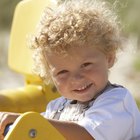
What Causes a Toddler's Hair Not to Grow?
Learn More
Trichotillomania occurs when a person pulls out their own hair. This can be very difficult to treat since, according to the AHLA, trichotillomania is tied with obsessive-compulsive disorder. The person has an obsession to pull out their own hair and the compulsion is the act of pulling.
Antidepressants have successfully treated obsessive-compulsive disorder; however, an antidepressant may not be recommended for a toddler since these drugs can increase the risk of suicidal thoughts in children. According to Trichotillomania Learning Center, Clomipramine is an approved drug for pediatric obsessive-compulsive disorder and trichotillomania. A pediatrician will be able to give you detailed suggestions on the route of treatment.
Chemotherapy
In the unfortunate event where a toddler is diagnosed with cancer, chemotherapy is often included in the treatment. As with adults, chemotherapy causes hair loss for most patients because according to the AHLA, these anti-cancer drugs are meant to kill fast-growing cells, which includes hair-cells. Once chemotherapy has ended, the toddler’s hair will begin to grow several months later.
Alopecia Areata

Why Doesn't My Toddler's Hair Grow?
Learn More
According to the AHLA, 1 out of 1,000 children will experience alopecia areata, which happens when a person is allergic to their own hair. The hair loss will often occur overnight and the toddler will have no signs of an infection or trauma.
According to Keep Kids Healthy, the hair loss will typically occur in one-of-three areas of the scalp. There is no reliable treatment; however, most people’s hair will grow back within a year.
Considerations
If your child wears barrettes, ponytails or braids, there is a possibility the hair is being pulled too tight to the point of hair loss in certain areas. If your toddler complains or is regularly touching an area, then the item is too tight and needs to be removed.
Poor nutrition can also cause hair loss and thinning. According to “What to Expect the Toddler Years,” toddlers need adequate protein intake in order to restore hair growth. Meats, eggs and peanut butter are great sources of protein.
An underlying medical condition, such as thyroid disease can also cause hair loss or thinning. In any situation where your child is losing more hair than average, contact your child’s pediatrician.
Related Articles
- American Hair Loss Association: Children Hair Loss
- "What to Expect the Toddler Years"; Heidi Murkoff, Arlene Eisenberg & Sandee Hathaway; 2008
- Trichotillomania Learning Center: Medications for Trichotillomania and Pathologic Skin Picking



